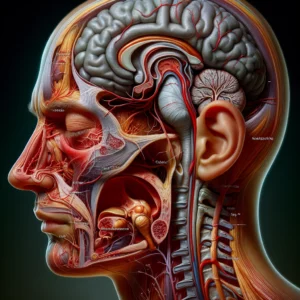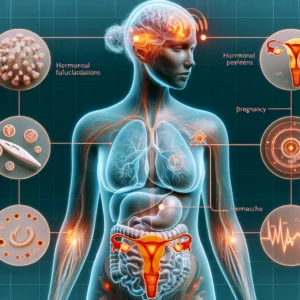Comprehensive Guide to Identifying Headache Causes and Implementing Effective Management Strategies
Headaches are a common health concern that can profoundly disrupt your daily life, affecting your ability to concentrate, work efficiently, and enjoy recreational activities. These painful experiences can present in various forms, each with distinct origins and accompanying symptoms. Understanding the different categories of headaches is essential for effective treatment and management. By acquiring this knowledge, individuals can tailor their approaches to address their unique experiences and needs, ultimately leading to a more effective remedy for this widespread health issue.
Whether you suffer from occasional headaches or persistent chronic pain, identifying the root causes is critical for exploring appropriate treatments and making beneficial lifestyle adjustments. As you investigate the complexities of headache management, consider a range of treatment options that include both traditional and alternative remedies. Therapies such as balanced acupuncture, neurological acupuncture, and manual therapy can target the underlying issues causing your discomfort, giving you the ability to regain control over your health and well-being.
By exploring these diverse treatment options, you can initiate a holistic journey focused on alleviating headaches while simultaneously enhancing your overall health and wellness.
Key Strategies for Mastering Headache Management
- Tension headaches are the most common type, characterized by a constant band-like pressure surrounding the head, which often worsens during stressful periods.
- Migraine headaches manifest as intense, throbbing pain, typically accompanied by nausea, vomiting, and heightened sensitivity to light and sound, leading to significant disruptions in daily activities.
- Cluster headaches are infamous for their extreme pain, occurring in cyclic patterns, usually centered around one eye, and are considered among the most severe types of headaches.
- Sinus headaches are caused by sinusitis, leading to pressure and discomfort in the forehead, cheeks, and nasal regions, often exacerbated by allergies or infections.
- Hormonal headaches, commonly experienced by women, are linked to hormonal fluctuations and can arise during menstruation, pregnancy, or menopause, requiring specific management strategies.
 In-Depth Analysis of Tension Headaches and Their Triggers
In-Depth Analysis of Tension Headaches and Their Triggers
Identifying Key Patterns and Triggers Associated with Tension Headaches
Reflecting on your personal experiences can help reveal specific patterns that may trigger tension headaches. Factors such as long hours spent at a desk, emotional stress, or poor ergonomic setups can significantly contribute to their onset. Recognizing these triggers is vital for preventing future headaches and protecting your overall well-being. Common factors include workplace stress, insufficient sleep, and dehydration, all of which can intensify discomfort. Maintaining a detailed headache diary is a practical step to track when these headaches occur and the possible reasons behind them, enabling you to take proactive measures to reduce their impact on your daily life.
Adopting a Holistic Approach to Effectively Alleviate Tension Headaches
Employing a comprehensive, multifaceted strategy often proves beneficial for effectively alleviating tension headaches. Integrating therapies such as balanced acupuncture aims to restore energy flow throughout your body by targeting specific acupoints that may contribute to muscle tightness and stress. Additionally, incorporating relaxation techniques like deep breathing exercises or yoga can significantly alleviate tension while promoting overall wellness. By addressing both physical and emotional stressors through a holistic approach, you can greatly reduce the frequency and intensity of tension headaches, thereby improving your quality of life.
Maximizing Relief Through Neurological Acupuncture and Manual Therapy Techniques
Neurological acupuncture can enhance your relief efforts by focusing on the nervous system's role in pain perception. This specialized method targets the pathways involved in headache development, potentially changing how your brain responds to pain signals. When combined with manual therapy techniques, such as massage or myofascial release, you may experience significant reductions in the tension that often exacerbates headaches. Together, these therapies can synergistically alleviate pain while promoting lasting relaxation and enhanced well-being.
 Comprehensive Overview of Migraine Headaches: Symptoms and Management Strategies
Comprehensive Overview of Migraine Headaches: Symptoms and Management Strategies
Migraines involve more than just severe pain; they represent complex neurological episodes that can incapacitate you for hours or even days. Characterized by intense, throbbing pain typically felt on one side of the head, migraines may also include symptoms such as nausea, vomiting, and increased sensitivity to light and sound. Various triggers, including specific foods, hormonal fluctuations, and environmental factors, can provoke these debilitating attacks, highlighting the necessity of recognizing and managing these elements for effective treatment.
Effective management of migraines usually requires a layered approach. While medications can provide immediate relief during an attack, integrating therapies like acupuncture has been shown to reduce the frequency and severity of future episodes. Neurological acupuncture specifically targets the pain pathways linked to migraines, potentially altering your brain's reactions to pain signals and interrupting the cycle of recurring episodes.
When combined with manual therapy techniques aimed at relieving muscle tension and enhancing blood circulation, you may discover a more holistic strategy for effectively managing migraine headaches, empowering you to reclaim your daily life from the grasp of these distressing episodes.
Exploring the Nature of Cluster Headaches: Patterns, Triggers, and Severity
| Metrics | Data |
|---|---|
| Prevalence | 1 in 1,000 adults |
| Age of onset | 20-40 years old |
| Duration of attacks | 15 minutes to 3 hours |
| Pain intensity | Severe, often described as the worst pain experienced |
| Frequency of attacks | 1 to 8 times a day |
Cluster headaches are among the most painful types of headaches, often characterized by a burning or piercing pain that occurs in cyclical patterns or clusters. You may experience these attacks multiple times each day over several weeks or months, followed by periods of complete relief. The pain typically localizes around one eye or one side of the head and may be accompanied by symptoms such as nasal congestion or tearing, intensifying the distress of these attacks.
Due to their extreme severity, cluster headaches necessitate prompt and effective management strategies. While conventional medications may provide some relief, exploring alternative therapies like acupuncture can greatly reduce the frequency and intensity of these painful episodes. By stimulating specific points linked to the trigeminal nerve—the primary nerve responsible for headache pain—neurological acupuncture may help regulate your body's pain responses, potentially alleviating some of the burden associated with cluster headaches.
When combined with manual therapy techniques aimed at promoting relaxation and reducing stress, you may discover a more balanced and practical approach to managing these intense headache episodes, ultimately improving your overall quality of life.
 Addressing the Challenges of Sinus Headaches: Causes and Remedies
Addressing the Challenges of Sinus Headaches: Causes and Remedies
Sinus headaches typically occur due to inflammation or infection within the sinus cavities, resulting in uncomfortable pressure and pain in the forehead, cheeks, and areas around the eyes. You may also experience these headaches alongside nasal congestion, facial tenderness, and even fever. Understanding the underlying causes of sinus headaches is crucial for effective treatment, as they frequently arise from allergies or respiratory infections that can worsen your symptoms, creating a cycle of discomfort.
A combined therapeutic approach can be particularly effective in addressing sinus headaches. Acupuncture has shown promise in reducing inflammation and promoting drainage within the sinuses, alleviating the pressure and discomfort associated with these headaches. Employing balanced acupuncture techniques specifically targets acupoints related to sinus health, while neurological acupuncture can address any pain pathways that contribute to your suffering.
Furthermore, incorporating manual therapy can relieve tension in the neck and shoulders, which may further exacerbate sinus pressure. This comprehensive, multifaceted strategy can provide substantial relief from the discomfort linked to sinus headaches, allowing you to breathe easier and experience a more comfortable daily life.
 Examining Hormone-Related Headaches and Strategies for Management
Examining Hormone-Related Headaches and Strategies for Management
Understanding the Complex Interplay Between Hormones and Headache Occurrences
Investigating the intricate relationship between hormones and headache occurrences can empower you to take proactive steps in managing these specific headaches. Hormonal fluctuations, particularly in women, can trigger painful headaches, often coinciding with menstrual cycles, pregnancy, or menopause. By identifying these patterns, you can better anticipate and prepare for potential headache episodes, allowing for more effective management strategies.
Utilizing Natural Remedies for Effective Relief from Hormone-Related Headaches
To alleviate hormone-related headaches, consider integrating therapies that focus on balancing your body's energy and hormonal levels. Acupuncture has been shown to help regulate hormonal fluctuations by stimulating specific acupoints that influence endocrine functions. Moreover, neurological acupuncture can enhance this approach by addressing the nervous system's role in pain perception during hormonal shifts, providing a more comprehensive treatment experience that targets the underlying causes.
Adopting a Holistic Strategy for Managing Hormone-Related Headaches
When combined with manual therapy techniques designed to promote relaxation and alleviate stress, you may discover a more effective way to manage hormone-related headaches. This holistic approach can help you navigate the complexities of hormonal changes, providing the tools necessary to reduce pain and improve your overall quality of life, enabling you to thrive even amidst these fluctuations.
 Effective Strategies for Overcoming Rebound Headaches
Effective Strategies for Overcoming Rebound Headaches
Rebound headaches often arise from the overuse of pain relief medications, leading to a cycle of dependency and an increase in headache frequency. You may find yourself frequently reaching for over-the-counter pain relievers, only to experience worsening headaches as the medication becomes less effective. Recognizing this cyclical pattern is essential for breaking free from rebound headaches and regaining control of your health.
To effectively manage rebound headaches, it is crucial to reduce your reliance on medications while gradually exploring alternative therapies. Acupuncture offers a natural method to alleviate pain without resorting to pharmaceuticals. Utilizing balanced acupuncture techniques can help restore energy flow and promote relaxation, while neurological acupuncture addresses the underlying pain pathways affected by medication overuse.
By incorporating manual therapy techniques focused on relieving tension and reducing stress, you can develop a holistic approach to breaking the cycle of rebound headaches. This strategy ultimately empowers you to regain control over your health and well-being, enhancing your overall quality of life.
 Comprehensive Techniques for Understanding and Managing Mixed Headaches
Comprehensive Techniques for Understanding and Managing Mixed Headaches
Mixed headaches present a unique challenge as they exhibit characteristics of multiple headache types, complicating both diagnosis and treatment. You may experience symptoms reminiscent of tension headaches one day and migraines the next, making it essential to customize your management strategy based on your specific symptoms. Understanding the complexities associated with mixed headaches is crucial for formulating a treatment plan that aligns with your individual needs.
Consider adopting a comprehensive approach that incorporates various therapies to effectively manage mixed headaches. Acupuncture can be particularly beneficial in addressing the diverse symptoms associated with mixed headaches by targeting multiple acupoints relevant to different headache types. Furthermore, neurological acupuncture may assist in modulating pain perception across various pathways, while balanced acupuncture promotes overall wellness and alleviates discomfort.
Additionally, manual therapy techniques can effectively relieve muscle tension and stress that may contribute to headache development. By integrating these varied approaches, you can create a tailored strategy for managing mixed headaches, significantly enhancing your overall quality of life.
Frequently Asked Questions About Headaches and Their Management
What are the different types of headaches?
There are several distinct types of headaches, including tension, migraines, cluster, sinus, and hormone-related headaches. Each type has unique characteristics and treatment approaches, necessitating personalized strategies for effective management.
Can you elaborate on tension headaches?
The Article Types of Headaches Explained: A Comprehensive Guide appeared first on https://mcrtherapies.com
The Article Headache Types Explained: Your Comprehensive Guide Was Found On https://limitsofstrategy.com
